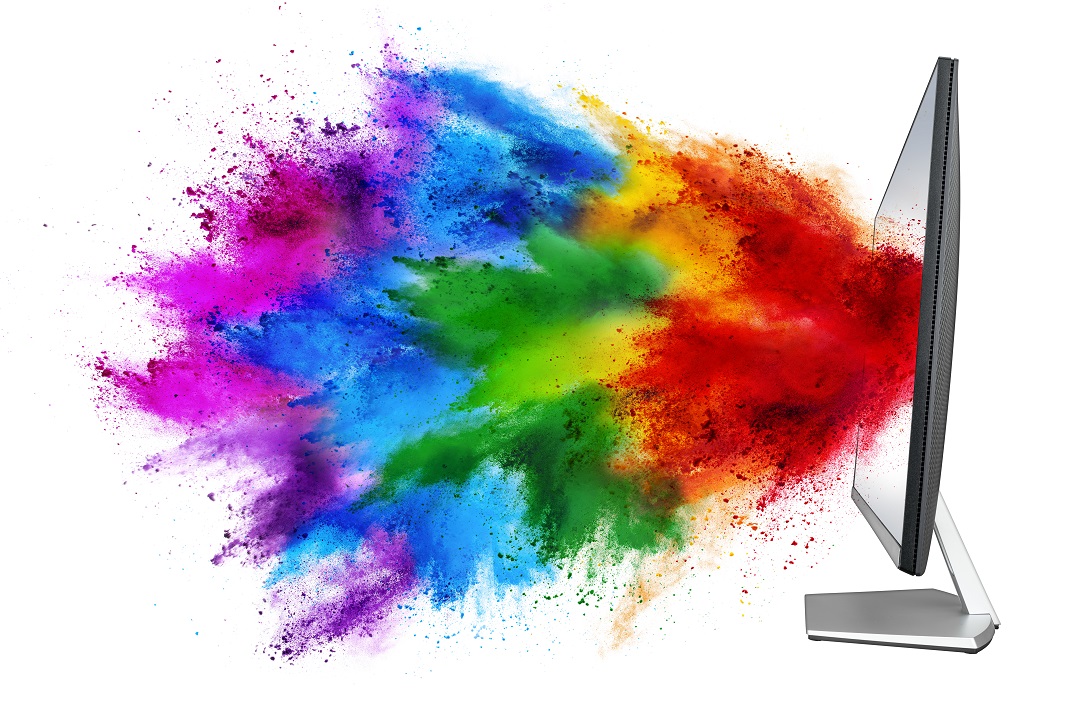sRGB stands for Standard Red Green Blue and is a color space, or a set of specific colors, created by HP and Microsoft in 1996 with the goal of standardizing the colors portrayed by electronics. sRGB is the most popular color space used today and the one used for Windows, most web browsers and most console and PC games, unless they’re HDR.
When looking for the best gaming monitor, TV or other electronic, you may notice a product claiming to cover a certain percentage of the sRGB color space. This tells you how much of the sRGB color space the monitor is supposed to be able to reproduce (how accurately it does so is another story that can only be confirmed via testing).
A monitor or other device’s color gamut tells you which color space or spaces the device can reproduce and how much of said space(s) it can portray from 0-100% or even greater. Besides sRGB, other common color spaces include Adobe RGB and DCI-P3, which are both larger — or encompass more colors — than sRGB.
sRGB Standard
The International Electrotechnical Commission (IEC) standardized sRGB in 1999. You can find the official sRGB standard via the IEC here, and it’s also viewable here.
A color space is definable by its triangle on the CIE 1931 XY Chromaticity Diagram created by the International Commision on Illumination (CIE).
The CIE 1931 XY Chromaticity Diagram below shared via BenQ represents the full range of colors the human eye can see. Within that range of colors is a white triangle, which outlines the colors the sRGB standard entails. If you tried to look at an image with colors outside of that triangle on an sRGB monitor, for example, those other additional colors would look inaccurate and undersaturated. Other popular color spaces are also defined in the diagram below.
Color spaces define their range of colors via specific coordinates on the chromaticity chart above. Coordinates for sRGB colors are based on the (International Telecommunication Union Radiocommunication Sector’s (ITU-R’s) BT.709 standard [PDF], which is also known as Rec .709 and ITU 709 and was created for HDTVs.
Here are the color coordinates for the sRGB space:
| X Coordinate | Y Coordinate | |
|---|---|---|
| Red | 0.64 | 0.33 |
| Green | 0.3 | 0.6 |
| Blue | 0.15 | 0.06 |
| White point, also known as D65 or CIE Illuminant D65 | 0.3127 | 0.329 |
sRGB uses 8-bit color (as opposed to 10-bit color or greater). The sRGB standard also uses a gamma value of 2.2.
sRGB vs DCI-P3
While sRGB is the standard, other color spaces can be desirable. For example, Adobe RGB, while not an international standard, is popular in professional environments as it offers a broader range of colors and was made by Adobe, bringing obvious appeal to users of software like Adobe Photoshop. DCI-P3 is another popular space that’s similar to Adobe RGB in terms of the colors it covers but targets video and is internationally standardized.
DCI-P3 and Adobe RGB are similar and both larger (covering more colors) than sRGB. If accurate, a DCI-P3 monitor has a 25% wider color gamut than an sRGB monitor.
Another difference between sRGB and DCI-P3 is that the latter can handle 10-bit color, key for HDR content.
Speaking of HDR, DCI-P3 is also the color space HDR content uses, so if you want the best HDR monitor or display, you should look for something with significant DCI-P3 coverage. Full sRGB coverage wouldn’t do the format complete justice. If you watch HDR content on an sRGB monitor, (assuming it supported the HDR format), you wouldn’t be accessing the full range of colors available in that media. But if you want a good HDR screen that also allows you to view Windows and SDR content accurately, you should ensure that the display also has an accurate sRGB mode, where it properly shifts the color gamut to sRGB’s range of colors.
We’ve found that for SDR gaming and entertainment, offering more color than sRGB calls for — whether by oversaturating the sRGB color space or using DCI-P3 — can be enjoyable, even if it’s not entirely accurate. In fact, many screens we test these days offer more than 100% coverage of sRGB, making content made in the sRGB color space look more saturated than perhaps the content creators intended.
This article is part of the Tom’s Hardware Glossary.
Further reading:
- Display Testing Explained: How We Test PC Monitors
- Best Gaming Monitors
- Best Budget 4K Monitors
- PC Monitor Buying Guide
